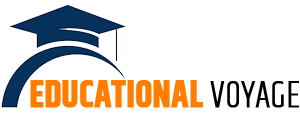08 May Why the Science of Reading is Important in Classrooms
[ad_1]
Studying is an important talent. But there are roughly 25 million kids within the U.S. who can’t learn proficiently, in accordance with the Nationwide Evaluation of Academic Progress (NAEP).
In shutting down colleges, the COVID-19 pandemic has exacerbated this disaster. Many college students, particularly youthful learners and kids in poverty, have regressed in studying (and math) skills.
In the previous couple of years, states have begun turning to instruction based mostly on cognitive analysis, often known as the “science of reading,” to assist kids study extra successfully.
Why aren’t all lecturers instructing phonics and who’s being left behind?
The science of studying has constantly proven that kids turn out to be higher readers after they obtain specific and systematic phonics instruction. So why haven’t lecturers been instructing phonics to starting readers?
First, there’s a prevailing false impression that studying is a pure course of for youngsters if they’re surrounded by literature. Influenced by a number of prominent, yet misguided thought leaders, many lecturers have seen the systematic strategy to phonics instruction as old style and mechanical, believing that it’d even hinder kids from growing a love of studying.
Second, lecturers are usually not being given the coaching and assist to show phonics. Earlier than 2019, solely a handful of states had established particular necessities to show phonics to aspiring lecturers. Consequently, many faculties of schooling don’t embody coaching within the mechanics of decoding English, both as a result of they’re unaware of the analysis, or they’ve dismissed it.
Analysis has demonstrated that kids who don’t study to learn by the third grade are prone to remain poor readers for all times and far more likely to drop out of college than are higher readers. Though kids in all demographic teams have been affected by the literacy disaster, Black and Latinx kids, youngsters from low-income households, ESL college students and children with studying disabilities have fallen the furthest behind.
When youngsters are usually not being taught phonics and the right way to decode phrases in class, mother and father who can afford it are compelled to show to personal tutoring to assist college students fighting studying. In the meantime, youngsters from poor households and traditionally marginalized communities with out the means to afford costly non-public tutors are left behind.
The NAEP reported in 2022 that whereas 45% of white fourth graders scored proficient or above within the nationwide studying evaluation, solely 18% of Black fourth graders did the identical.
In different phrases, greater than 8 in 10 Black fourth graders are usually not proficient readers, which makes them disproportionately extra prone to drop out of highschool and end up in the criminal justice system. Advocates say that common entry to scientifically-based studying instruction would be the simplest approach to slender this racial achievement hole and an important step towards social justice for Black and Hispanic kids.
How are states incorporating the science of studying into curriculums?
At present, guaranteeing that college students expertise glorious early studying instruction that places cognitive science analysis to work is a high precedence, particularly amongst southern states with excessive poverty and low literacy charges. It is a key civil rights and academic fairness concern, particularly within the wake of pandemic-learning disruptions.
As of July 2022, 29 states and the District of Columbia have handed legal guidelines or applied insurance policies to emphasise the science of studying in class curriculums. For example, Delaware’s literacy plan consists of skilled improvement for lecturers, high-quality instructing supplies and an funding in early literacy packages. The state allotted a portion of federal COVID funds into the literacy tutoring program Studying Help, which targets kids who rating within the backside 10 p.c for studying proficiency.
The Tennessee and Mississippi Examples
Notably, the states of Tennessee and Mississippi have been making nice strides in supporting literacy improvement.
Following an overhaul of how colleges educate studying in 2013, Mississippi has been ranked first within the nation for enchancment in studying scores from 2017 to 2019. The state made a large funding in funding pre-k establishments and coaching lecturers. Instructor candidates within the state at the moment are required to move the Foundations of Studying check on studying sciences to be licensed to show elementary faculty. All third graders within the state are additionally required to move the “Studying Gate Evaluation” or threat being held again.
Equally, final 12 months, Tennessee leveraged roughly $60 million in federal COVID-19 aid funding and $40 million in federal grant funding to launch Reading 360 as a part of a decade-long rehaul of Okay-12 schooling. The initiative trains all lecturers in phonics by means of the research-backed program LETRS and offers them with high-quality studying curricula, correct assessments and assist. In 2021, Gov. Invoice Lee signed the Tennessee Literacy Success Act, requiring all elementary faculty lecturers to be skilled within the phonics strategy to instructing studying. To date, greater than 40,000 lecturers throughout the state have participated within the coaching. Information exhibits that 75% of Tennessee districts noticed an improvement in college students’ studying scores and the progress was even sustained regardless of the pandemic.
To study extra about how states are implementing new insurance policies concentrating on literacy, try this chart from Training Week.
Is the science of studying only for younger youngsters?
Tutorial methods thought-about a part of the science of studying have been confirmed to assist all kids study to learn, particularly these with dyslexia. Youngsters with dyslexia, who battle with recognizing phrases and decoding texts, profit from early identification and specific, complete studying instruction. Whereas many of those college students will want further tutorial consideration, efficient, research-based studying instruction in all primary-grade school rooms will assist their success and will cut back the necessity for supplemental instruction.
Whereas a lot of the speak about studying has centered squarely on the necessity for extra consideration to phonics for younger starting readers, older college students additionally profit from phonics and basic etymology to assist decode complicated tutorial phrases. In response to NAEP, two in three eighth graders nationwide are usually not studying with proficiency. The phonics motion in Memphis seeks to handle this explicit demographic by means of a literacy curriculum embedded in all topic areas, from social research to math. This system focuses on serving to teenage college students develop their vocabularies and strengthen studying abilities realized in elementary faculty.
Is instructing phonics sufficient to make sure literacy?
The science of studying has demonstrated the significance of phonics instruction in instructing studying, however phonics alone just isn’t sufficient for literacy. Simply because youngsters know the right way to learn the phrases on a web page doesn’t imply they totally perceive what the phrases imply. Different key areas of studying instruction embody fluency, vocabulary and comprehension.
In a current Forbes article, schooling thought chief Natalie Wexler powerfully argues that the simplest methods to extend vocabulary and comprehension are to construct elementary college students’ background data in science and social research and to show them early and sometimes to complicated phrases and sentences. Whereas phonics is the muse for studying to learn, to achieve full proficiency, college students should construct their background data, too.
Prior to now 12 months, frictions have risen between the science of literacy proponents and multilingual educators, most notably over the Illinois Right to Read Act. Latino Coverage Discussion board, which led the opposition towards the act, argued that the robust push for phonics may doubtlessly hinder different necessary areas of studying instruction which are essential for English as a second language learners.
Latest discoveries have proven that multilingual audio system use their brains in another way when studying than do monolingual audio system and, thus, could require completely different strategies of instruction. Proponents additionally introduced up the dearth of socio-cultural assist and sources for non-native English language learners. At the moment, there’s a growing shortage of English as a second language lecturers throughout 33 states and the District of Columbia.
The excellent news is there’s frequent floor between either side. Versatile approaches to instructing literacy should be put in place to be able to be sure that all kids, no matter background, achieve the talents to learn in U.S. school rooms. In February 2022, The National Committee for Effective Literacy (NCEL) launched a set of finest practices for instructing multilingual kids. Pointers embody further instruction time, fostering the 5 pillars of literacy and serving to the scholars join their understanding of phonetic letters in English to sounds of their native languages.
The science of studying exhibits us how proficient studying abilities develop, how we will most successfully assess and educate literacy and why some have extra difficulties gaining studying proficiency. Developments over the past decade have proven us the significance of state funding in studying instruction.
Step one to handle our nation’s studying disaster calls for that we guarantee lecturers are explicitly and systematically instructing all youngsters the right way to join sounds with letters.
[ad_2]
Source link


